Our trail begins on Level 3 and ends on the ground floor. Here we go…
Stop 1: Vickers-Supermarine Mk I Spitfire
Location: Flight, Level 3
To get to the first stop, travel up to the Flight Gallery on Level 3. Head through the gallery to the cockpit section at ground level then look up.
High up over your head you will see two camouflaged WW2 fighter planes with propellers; the lower one is a Vickers-Supermarine Mk I Spitfire plane.

The Spitfire was integral to Britain’s front-line air defence during World War II. One Spitfire pilot was Roberta Cowell, a record-breaking race car driver and decorated fighter pilot. Cowell studied engineering at University College London and competed in the 1939 Antwerp Grand Prix before joining the RAF in 1942.
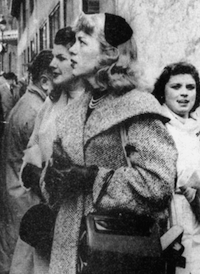
After the traumatic events of World War II, during which she was held prisoner in Germany, Cowell went back to racing but struggled with her mental health and gender identity. With the support of Michael Dillon, a trans man and physician, she was the first British trans woman to undergo gender affirming surgery and change her birth certificate.
Trans – or transgender – is an umbrella term that covers many different experiences for people who do not identify as the gender they were assigned at birth. While gender-affirming medical transition was a tool for Cowell to be recognised as a woman in the 1950s, it is not something that all trans people choose for themselves.
Stop 2: Main frame for Alan Turing’s Automatic Computing Engine (ACE) pilot model
Location: Information Age, Level 2
Down on Level 2 of the museum is the Information Age gallery. In the centre of the gallery look for the pilot model of the Automatic Computing Engine (ACE).
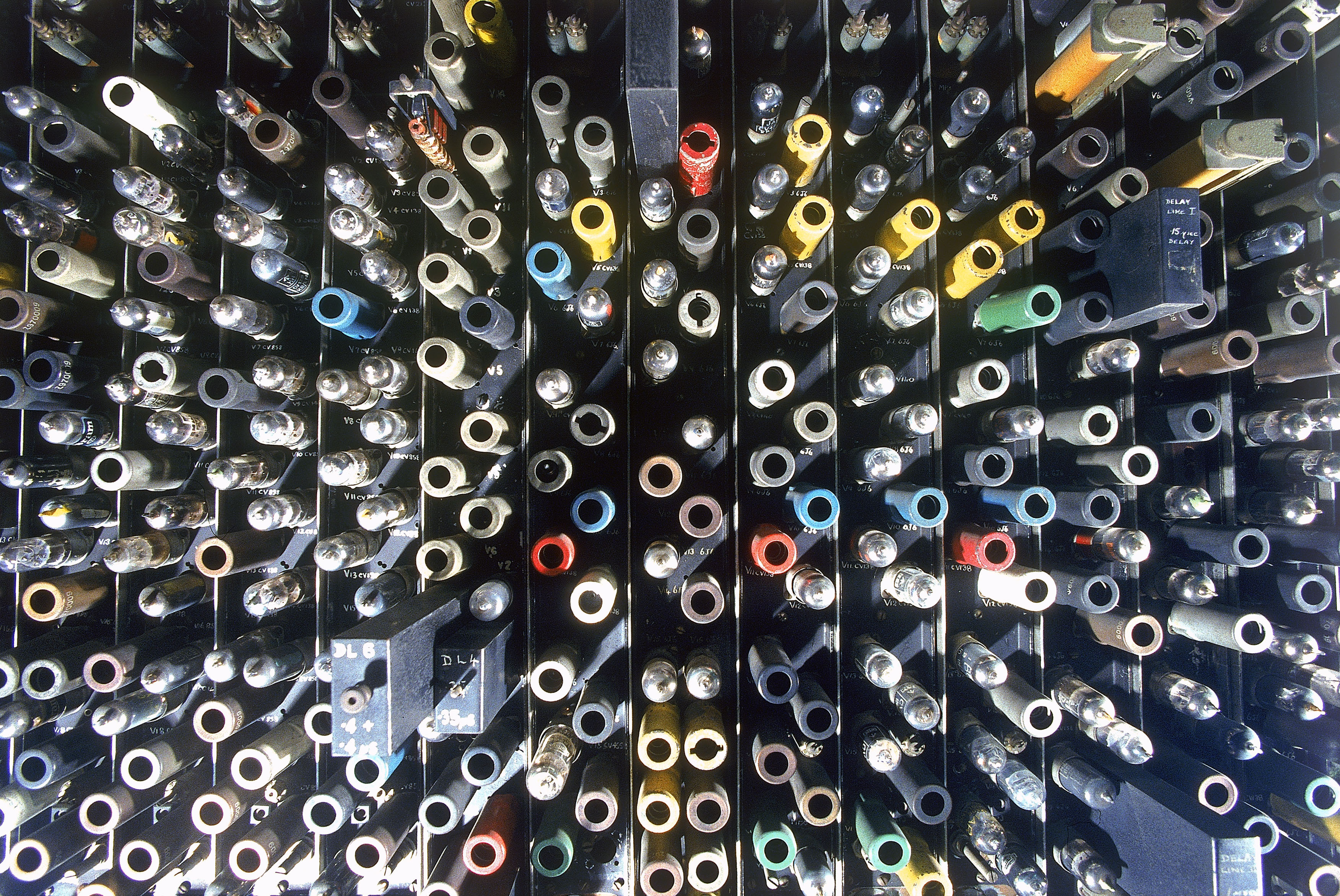
In 1945, British mathematician Alan Turing designed ACE, which would have been the world’s first general-purpose computer. This smaller prototype was completed at the National Physical Laboratory in 1950. By then Turing had moved to the University of Manchester.
It was in Manchester in 1952 that Turing was convicted of ‘gross-indecency’, a term used to criminalise homosexual acts at the time. This conviction changed Turing’s life with a sentence that included chemical castration and removal of his security clearance, ending his important work with GCHQ at Bletchley Park.
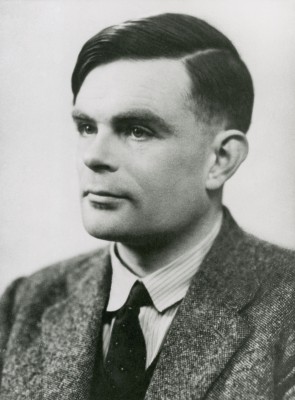
Two years later, on 7 June 1954, shortly before his 42nd birthday, Turing ingested a large amount of cyanide solution at his home in Wilmslow near Manchester and was found dead the next day. The coroner recorded a verdict of suicide, although the full circumstances of Turing’s death remain unclear.
It was not until 2013, following a long campaign, that Turing was granted a royal pardon for his alleged crimes. Today he is celebrated as one of the greatest minds in computing, but it is sobering to think what else he might have achieved had he not been convicted under this unjust law.
Stop 3: Bottle for violet syrup
Location: Medicine: The Wellcome Galleries, Medicine and Treatments, Level 1
Now, make your way downstairs to Medicine: The Wellcome Galleries. In the Medicine and Treatments gallery, you can walk inside the Gibson Pharmacy. Look for a cabinet to the right of the Sight Testing Rooms, where you will discover a bottle for violet syrup. Throughout history, violets have had many medicinal uses, such as for anti-inflammatories and soothing coughs.
Violets have also become associated with lesbian and bisexual identities. This can be traced back to the Greek poet Sappho, who in 600 BCE lived on the island Lesbos. Inspiring the words ‘Lesbian’ and ‘Sapphic’, she used botanical references including violets in many of her poems to express romantic feelings for other women, and she is today widely perceived as a symbol for love and desire between women.
Since then, Sapphic violets have appeared in other works of literature such as the 1926 Broadway play The Captive by Édouard Bourdet. In this story, a lesbian character sends a bouquet of violets to her lover. This caused an uproar and led to the play being shut down after 160 performances.
Afterwards, violets became a political symbol, as supporters of the play wore them pinned to their lapels. However violet sales in New York City plummeted due to fears of associations with homosexuality.
Stop 4: Pair of Sebright bantams
Location: Exploring Medicine gallery, Level 1
Continue through the Medicine galleries towards the front of the museum and you will reach the Exploring Medicine gallery, which wraps around two lifts (Lift D on the museum map). Here, you’ll find a pair of Seabright bantam chickens.
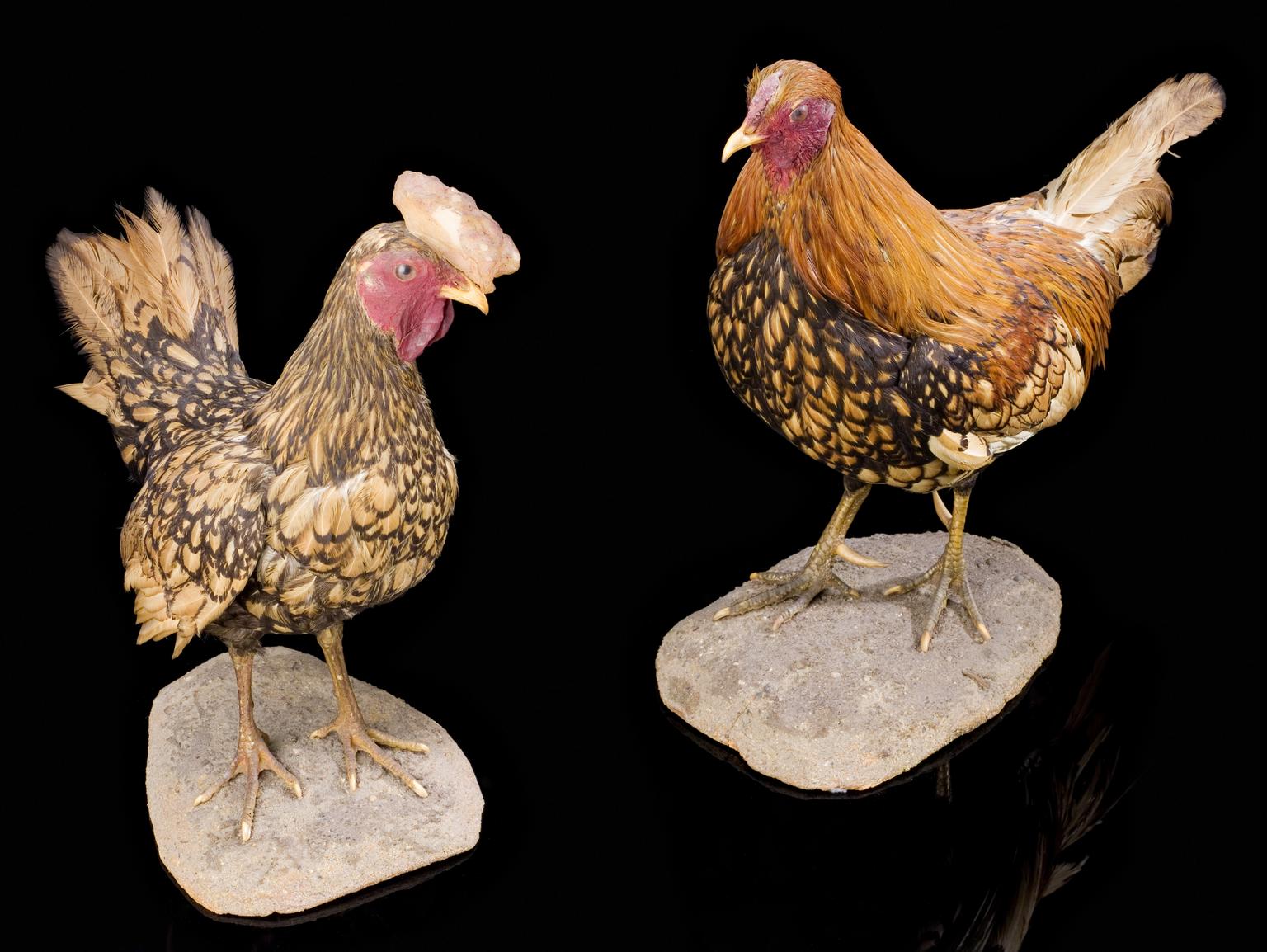
Thomas Hunt Morgan bred this pair of male chickens to investigate the genetic inheritance of plumage. Morgan discovered the role chromosomes play in heredity, for which he won the Nobel Prize for Medicine in 1933. Chromosomes are one of the markers used to identify the biological sex of a person. Other markers include hormones, genitals, and characteristics like depth of voice and hairiness.
While a biological human female usually has XX sex chromosomes and a biological human male generally has XY, we now know there is diversity in the presence and combinations of sex-determining features, including variation in sex chromosomes. Some people who have a difference of sex development identify as members of the intersex community.
Sex and gender are often used interchangeably, but they mean different things.
Stop 5: 18th century glass female urinal
Location: Making the Modern World, Level 0
Make your way downstairs to the Making the Modern World gallery. Turn to your right and head to the display called Technology in Everyday Life c.1750-1820, where you will see a glass female urinal.
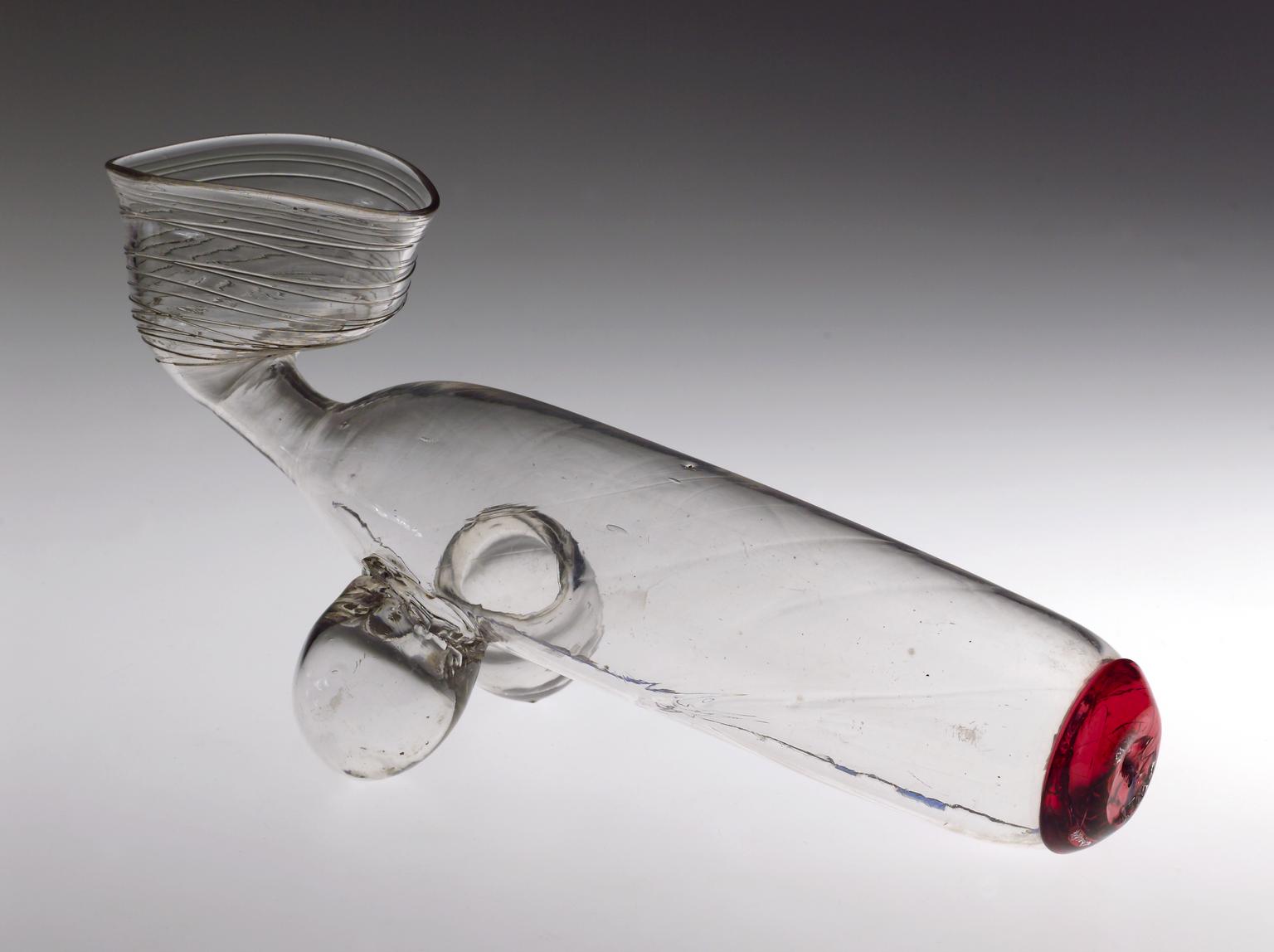
This suggestively shaped device is a female urinal that is made to resemble an erect penis with testicles. These were used by wealthy women to relieve themselves while on long coach journeys in an age of few hygienic toilet facilities.
Though most were likely less explicit than the item shown here, this example highlights the playful attitudes to sexuality that many had during the 18th century.
Today, objects similar to these are used by some trans men to alleviate gender dysphoria (a strange or negative feeling people may experience about their body and/or gender).
Stop 6: The Billy Doll
Location: Making the Modern World, Level 0
Further along the right side of Making the Modern World, look out for the Technology and Everyday Life c. 1968-2000 display. Here you will find the Billy doll.

Billy was designed for a queer audience, specifically adult gay men in response to the negativity directed towards the gay community during the AIDS epidemic.
Billy was first made as a fine art sculpture in 1992 by artists John McKitterick and Juan Andres and was then mass-produced in 1997.
Billy was made to help create positive visibility for the gay community and promote safe sex. The later addition of Billy’s boyfriend Carlos in 1998 and best friend Tyson in 1999, sought to champion more diversity in gay representations.
Stop 7: Lego ‘basic’ bucket of bricks
Location: Making the Modern World, Level 0
Just below Billy, you will see a bucket of Lego bricks.
Like other connectors and fasteners, Lego bricks are often described in a gendered way. The top of the brick with sticking out pins is male, the bottom of the brick with holes to receive the pins is female, and the process of the two sides being put together is called mating.
This is an example of applying heteronormative language to topics unrelated to gender, sex and reproduction. It illustrates how heteronormativity (the idea that heterosexuality and the male/female gender binary are the norm and everything that falls outside is unusual) shapes the way we speak about science, technology, and the world in general.
Stop 8: LIGO prototype beam splitter
Location: Near IMAX entrance, Level 0
Continue through Making the Modern World towards the IMAX theatre. Just before you reach the IMAX ticket desk, look to your left where you will find the Prototype beam splitter for the Advanced LIGO gravitational wave detector, our final stop on the tour.
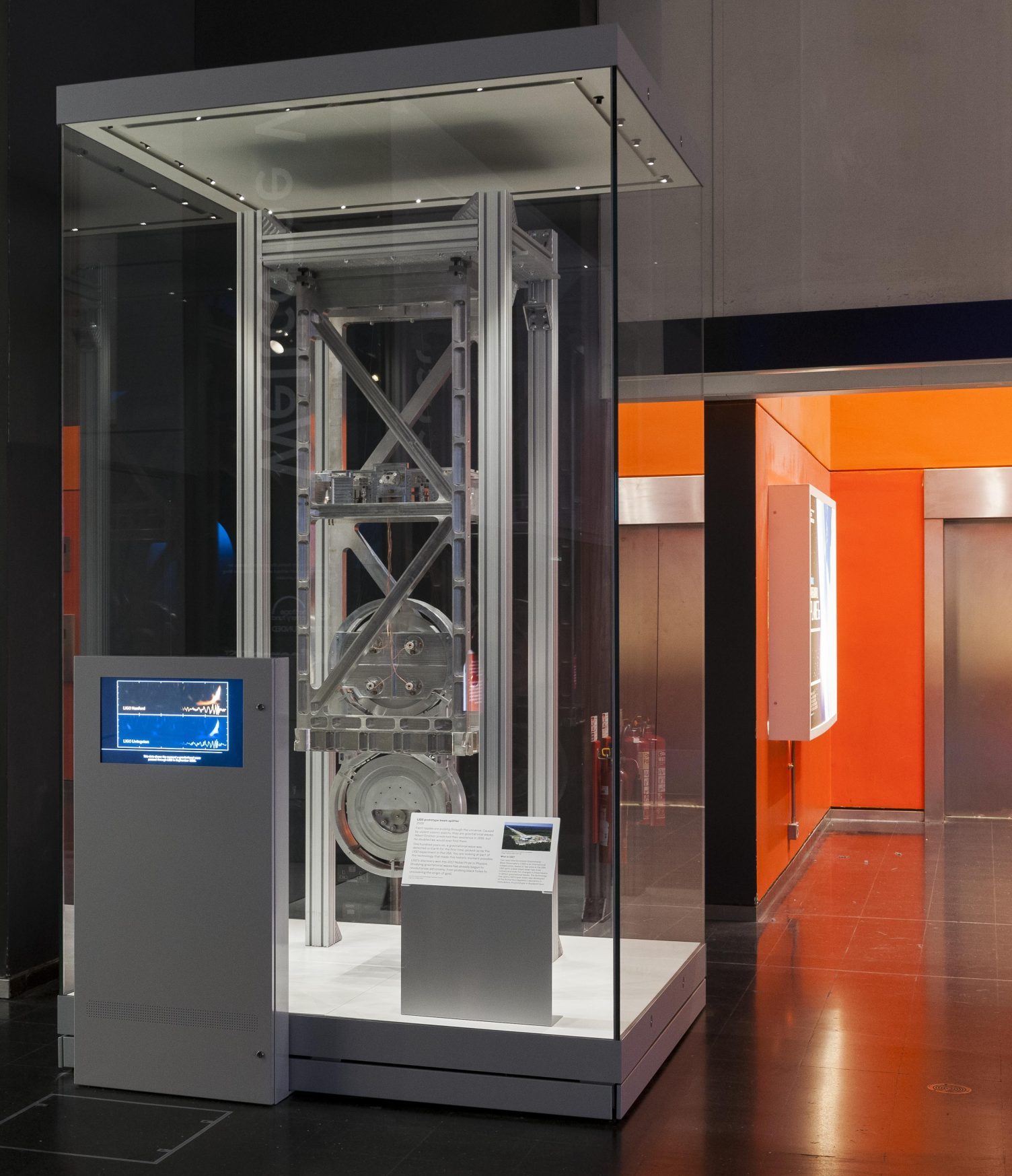
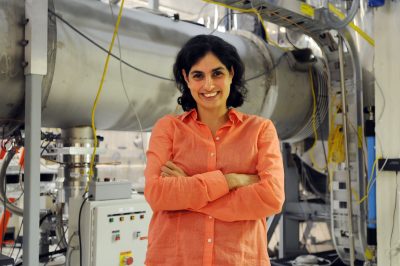
Nergis Mavalvala was part of a scientific team that used the Advanced LIGO gravitational wave detector in 2015, for which this object is a prototype.
As an openly lesbian woman of colour and ground-breaking astrophysicist, Nergis is considered a role model by many and was awarded LGBTQ+ Scientist of the Year in 2014.
Using LIGO, Nergis and her team were the first to directly detect gravitational waves – ripples pulsing through the universe that are caused by major cosmic events, like black holes. Albert Einstein predicted their existence in 1916 but assumed they would never be observed.